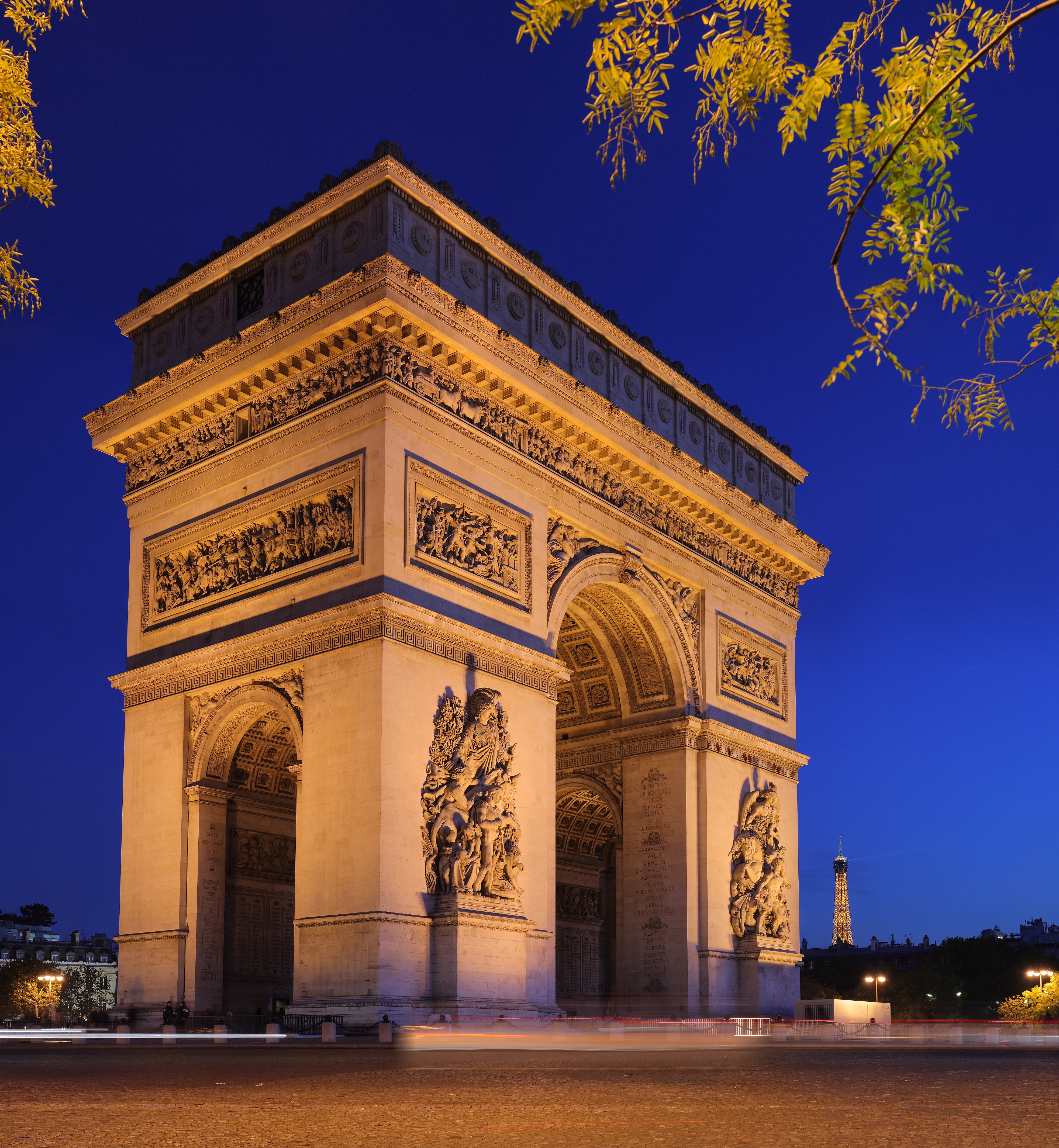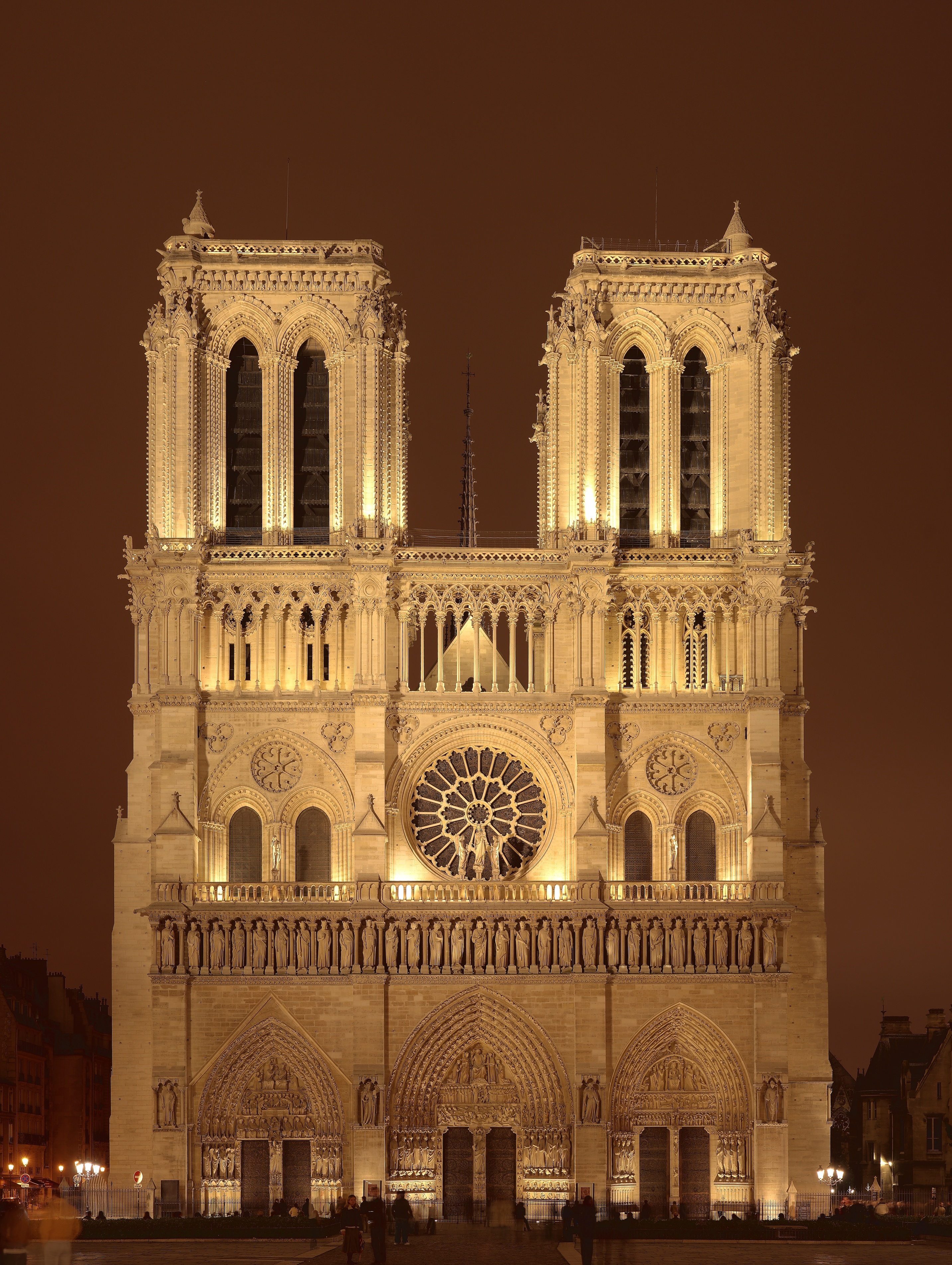
THE HISTORY OF PARIS
The earliest archaeological signs of permanent habitation in the Paris area date from around 4200 BC. The Parisii, a sub-tribe of the Celtic Sennoes, inhabited the area near the river Seine from around 250 BC. The Romans conquered the Paris basin in 52 BC, with a permanent settlement by the end of the same century on the Left Bank Sainte Genevieve Hill adn the Ile de la Cite. The Gallo-Roman town was originally called Lutetia, but later Gallicised to Lutèce. It expanded greatly over the following centuries, becoming a prosperous city with a forum, palaces, baths, temples, theatres, and an amphitheatre. The collapse of the Roman empire and the fifth-century Germanic invasions sent the city into a period of decline. By 400 AD, Lutèce, by then largely abandoned by its inhabitants, was little more than a garrison town entrenched into the hastily fortified central island. The city reclaimed its original appellation of "Paris" towards the end of the Roman occupation. The Frankish king Clovis I established Paris as his capital in 508.
Paris' population was around 200,000 when the Black Death arrived in 1348, killing as many as 800 people a day, and 40,000 died from the plague in 1466. Paris lost its position as seat of the French realm during occupation of the English-allied Burgundians during the Hundred Years' War, but regained its title when Charles VII of France reclaimed the city from English rule in 1436. Paris from then became France's capital once again in title, but France's real centre of power would remain in the Loire Valley until King François I returned France's crown residences to Paris in 1528. During the French Wars of Religion, Paris was a stronghold of the Catholic party. In August 1572, under the reign of Charles IX, while many noble Protestants were in Paris on the occasion of the marriage of Henry of Navarre, the future Henry IV, to Marguerite de Valois, sister of Charles IX, the St. Bartholomew's Day massacre occurred; begun on 24 August, it lasted several days and spread throughout the country. During the Fronde, Parisians rose in rebellion and the royal family fled the city (1648). King Louis XIV then moved the royal court permanently to Versailles in 1682. A century later, Paris was the centre stage for the French Revolution, with the Storming of the Bastille on 14 July 1789 and the overthrow of the monarchy in September 1792.
Click on sights to learn more about them:
The Arc de Triomphe
Eiffel Tower
Musee du Louvre
Musee d' Orsay
Notre-Dame
Pantheon
Les Invalides
Chateau de Versailles
THE AGENDA:
(Subject to change)
1. Arrive in Paris around 8:00 am
2. Take Train to Paris Central and Unload Luggage at Hotel
3. Tour the Eiffel Tower
4. Lunch
5. Tour the Arc de Triomphe
6. Tour Notre-Dame
7. Visit Les Invalides
8. Dinner
9. Settle down for the night
THE ARC DE TRIOMPHE
 The Arc de Triomphe is a monument in Pairs, France that stands in the centre of the Place Charles de Gaulle, also known as the "Place de l'Étoile". It is at the western end of the Champs-Élysées. The triumphal honors those who fought for France, particularly during the Napoleonic Wars. On the inside and the top of the arc there are all of the names of generals and wars fought. Underneath is the tomb of the unknown soldier from World War I . The Arc is the linchpin of the historic axis (L'Axe historique) — a sequence of monuments and grand thoroughfares on a route which goes from the courtyard of the Louvre Palace to the outskirts of Paris. The monument was designed by Jean Chalgrin in 1806, and its icongrapic program pitted heroically nude French youths against bearded Germanic warriors in chain mail and set the tone for public monuments, with triumphant nationalistic messages, until World War I. The monument stands 49.5 m (162 ft) in height, 45 m (150 ft) wide and 22 m (72 ft) deep. The large vault is 29.19 m (95.8 ft) high and 14.62 m (48.0 ft) wide. The small vault is 18.68 m (61.3 ft) high and 8.44 m (27.7 ft) wide. It is the second largest triumphal arch in existence. Its design was inspired by the Roman Arch of Titus. The Arc de Triomphe is so colossal that three weeks after the Paris victory parade in 1919, marking the end of hostilities in World War I, Charles Godefroy flew his Nieuport biplane through it, with the event captured on newsreel.
The Arc de Triomphe is a monument in Pairs, France that stands in the centre of the Place Charles de Gaulle, also known as the "Place de l'Étoile". It is at the western end of the Champs-Élysées. The triumphal honors those who fought for France, particularly during the Napoleonic Wars. On the inside and the top of the arc there are all of the names of generals and wars fought. Underneath is the tomb of the unknown soldier from World War I . The Arc is the linchpin of the historic axis (L'Axe historique) — a sequence of monuments and grand thoroughfares on a route which goes from the courtyard of the Louvre Palace to the outskirts of Paris. The monument was designed by Jean Chalgrin in 1806, and its icongrapic program pitted heroically nude French youths against bearded Germanic warriors in chain mail and set the tone for public monuments, with triumphant nationalistic messages, until World War I. The monument stands 49.5 m (162 ft) in height, 45 m (150 ft) wide and 22 m (72 ft) deep. The large vault is 29.19 m (95.8 ft) high and 14.62 m (48.0 ft) wide. The small vault is 18.68 m (61.3 ft) high and 8.44 m (27.7 ft) wide. It is the second largest triumphal arch in existence. Its design was inspired by the Roman Arch of Titus. The Arc de Triomphe is so colossal that three weeks after the Paris victory parade in 1919, marking the end of hostilities in World War I, Charles Godefroy flew his Nieuport biplane through it, with the event captured on newsreel.NOTRE-DAME

In 1160, because the church in Paris had become the "parish church of the kings of Europe", Bishop Maurice de Sully deemed the previous Parisian cathedral, St Stephen's (which had been founded in the 4th century) unworthy of its lofty role, and had it demolished shortly after he assumed the title of Bishop of Paris. As with most foundation myths, this account needs to be taken with a grain of salt; archeological excavations in the 20th century suggested that the Merovingian Cathedral replaced by de Sully was itself a massive structure, with a five-aisled nave and a facade some 36m across. It seems likely therefore that the faults with the previous structure were exaggerated by the Bishop to help justify the rebuilding in a newer style. According to legend, de Sully had a vision of a glorious new cathedral for Paris, and sketched it on the ground outside the original church. To begin the construction, the bishop had several houses demolished and had a new road built in order to transport materials for the rest of the cathedral. Construction began in 1163, during the reign of Louis VII, and opinion differs as to whether Maurice de Sully or Pope Alexander III laid the foundation stone of the cathedral. However, both were at the ceremony in question. Bishop de Sully went on to devote most of his life and wealth to the cathedral's construction. Construction of the choir took from 1163 until around 1177 and the new High Altar was consecrated in 1182 (it was normal practice for the eastern end of a new church to be completed first, so that a temporary wall could be erected at the west of the choir, allowing the chapter to use it without interruption while the rest of the building slowly took shape). After Bishop Maurice de Sully's death in 1196, his successor, Eudes de Sully (no relation) oversaw the completion of the transepts and pressed ahead with the nave, which was nearing completion at the time of his own death in 1208. By this stage, the western facade had also been laid out, though it was not completed until around the mid 1240s. Over the construction period, numerous architects worked on the site, as is evidenced by the differing styles at different heights of the west front and towers. Between 1210 and 1220, the fourth architect oversaw the construction of the level with the rose window and the great halls beneath the towers. The most signifiant change in design came in the mid 13th century, when the transepts were remodelled in the latest Rayonnant style; in the late 1240s Jean de Chelles added a gabled portal to the North transept topped off by a spectacular rose window. Shortly afterwards (from 1258) Pierre de Montreuil executed a similar scheme on the South transept. Both these transept portals were richly embellished with sculpture; the south portal features scenes from the lives of St Stephen and of various local saints, while the north portal featured the infancy of Christ and the story of Theophilus in the tympanum, with a highly influential statue of the Virgin and Child in the trumeau. The cathedral was effectively complete by around 1345.
HOTEL
Grand Hotel Leveque
